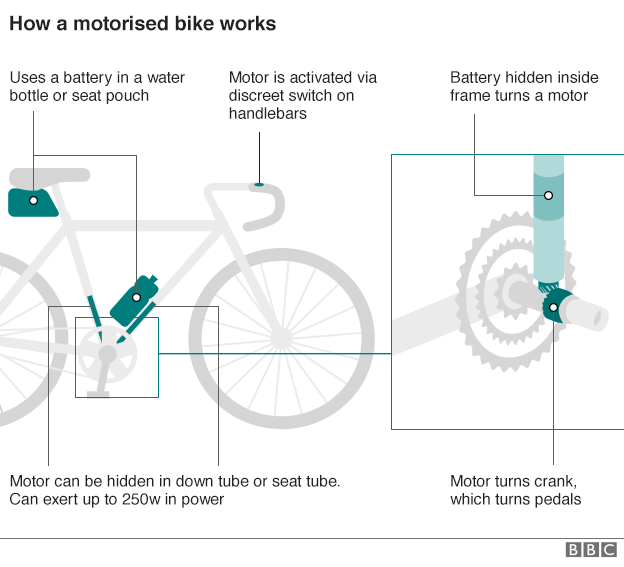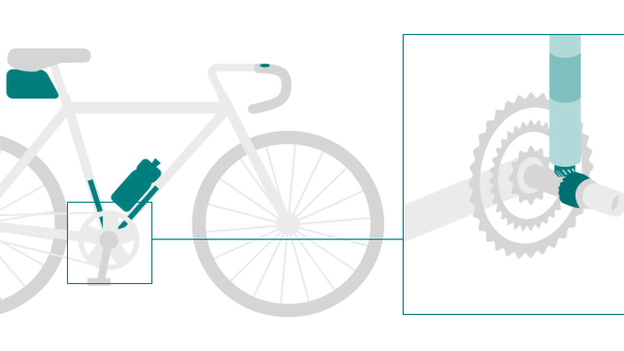Mechanical doping: UCI defends detection methods after fresh claims
- Published
Doped bikes: An example of how it works
Cycling's governing body says it has "extremely efficient" methods of detecting motors hidden in bikes, after fresh claims of mechanical doping.
TV station France 2, external and Italian newspaper Corriere della Sera, external claimed thermal imaging showed five motors had been hidden at two races this year.
The first top-level example of such practice was discovered at January's under-23 cyclocross world championship.
The UCI uses magnetic resonance testing, which is "easy to deploy".
"We have been trialling new methods of detection over the last year," the governing body told Reuters.
"We have looked at thermal imaging, X-ray and ultrasonic testing but by far the most cost-effective, reliable and accurate method has proved to be magnetic resonance testing.
"The scanning is done with a tablet and enables an operator to test the frame and wheels of a bike in less than a minute."
The UCI did not comment specifically on the latest claims but said it had tested 216 bikes at the Tour of Flanders and 224 at Paris-Roubaix, both of which took place this month.
France 2 and Corriere della Sera claimed three motors had been hidden in the seat tube and two in the rear hub at the Strade Bianche one-day race and the Coppi e Bartali earlier this season.

- Published3 February 2016

- Published12 February 2016

- Published15 April 2016

- Published25 July 2019

- Published19 July 2016
